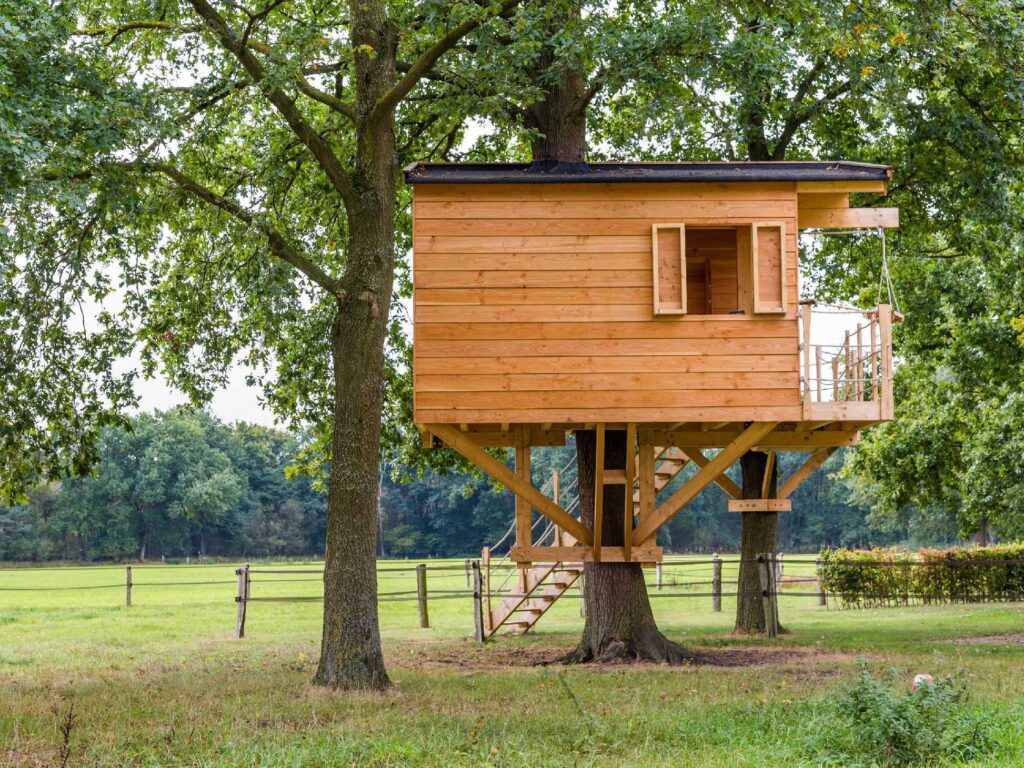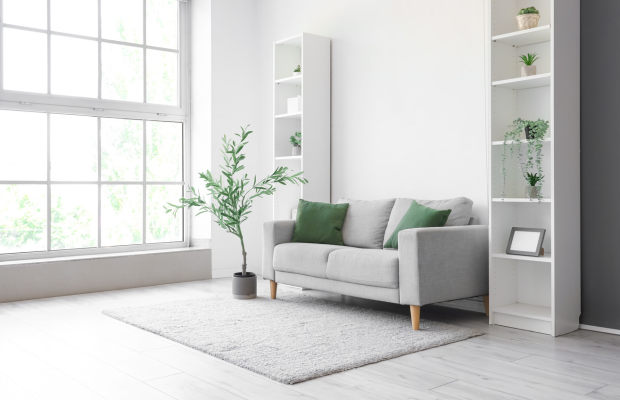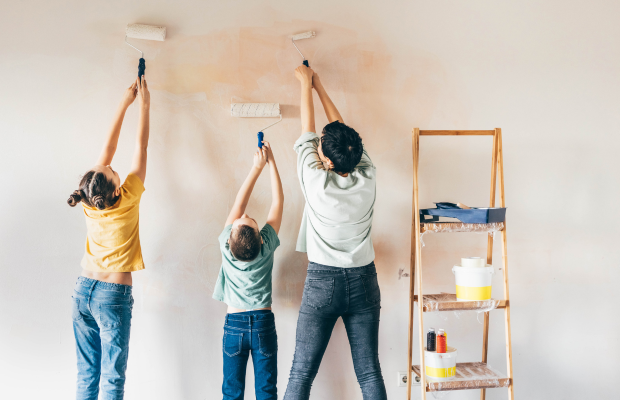The online world is packed full of amazing information, tips, and tricks – especially when it comes to DIY projects.
From DIY-focused websites to demonstration videos on YouTube, there isn’t much you can’t find an answer to online.
‘’By learning to do the little jobs yourself, you can save yourself hundreds of pounds each year,” says Martin & Co’s Managing Director Eric Walker.
“Taking on simple things like a drippy tap or bleeding a radiator can save you calling out a plumber.
“Most things in the garden can also be done yourself, too – YouTube has all the answers and will be your best friend when it comes to any questions!
“Remember simple things like fixtures and fittings are quick and easy jobs and can add instant value to your home if you ever decide to sell.”
But what are the most searched for DIY questions on Google?
We’ve looked at the data in this guide, as well as providing answers for some of the most common DIY search queries in cyberspace.
What DIY can you do at home?
There are a whole host of DIY projects you can take on at home, including:
- Painting and decorating
- Wallpapering
- Basic plumbing, such as tightening taps or installing a new waste trap
- Bleeding radiators
- Basic electrical work, including wiring plugs or light fittings
- Adding panelling to a feature wall
- Fitting shelving
- Sealing baths, showers, or windows
What are the most popular DIY projects?
The most popular projects can usually be found by looking at the DIY questions people are asking online – which is exactly what we’ve done!
1. DIY garden projects
With functional, appealing outdoor space more popular than it’s ever been, searches for garden-related DIY projects have soared.
Advice on laying a patio or decking topped our list of the most popular garden projects, as people look to turn their gardens into useable entertaining spaces.
Practicality, however, is also high on the wish list of garden DIYers, with more than 12,000 monthly searches on building a shed.
|
Rank |
Search term |
Monthly searches |
Most searched for by… |
|
1 |
How to lay a patio |
27100 |
Bristol |
|
2 |
How to lay decking |
14800 |
Bristol |
|
3 |
How to build a shed |
12100 |
Norwich |
|
4 |
How to build a pergola |
8100 |
Bristol |
|
5 |
How to level a garden |
6600 |
Plymouth |
|
6 |
How to design a garden |
4400 |
Bristol |
|
7 |
How to felt a shed roof |
4400 |
Norwich |
|
8 |
How to build a fence |
3600 |
Glasgow |
|
9 |
How to clean decking |
3600 |
Glasgow |
|
10 |
How to sharpen garden shears |
3600 |
Bristol |
How to clean decking
To clean decking, you should:
- Sweep the deck with a dry brush to remove any loose dirt or grime
- Make a solution of warm, soapy water and gently run a sponge along the grain of the wood to remove dirt from between the gaps on the deck boards
- Use a pressure washer on a wide setting and hold at least a foot away from your decking, moving the water jet with the grain of the wood to remove the soap
- Brush away any standing water on the deck, again brushing in the direction of the wood grain
2. DIY plumbing projects
Plumbing can be scary for novices, but many thousands of people are looking to tackle water-related issues in their homes, it seems.
Common problems like blocked sinks and toilets were two of the most popular searches in our research, while bleeding radiators and fixing dripping taps are also popular tasks being taken on by property owners.
|
Rank |
Search term |
Monthly searches |
Most searched for by… |
|
1 |
How to unblock a toilet |
14800 |
Bristol |
|
2 |
How to unblock a sink |
9900 |
Bristol |
|
3 |
How to bleed a radiator |
6600 |
Belfast |
|
4 |
How to fix a dripping tap |
4400 |
Belfast |
|
5 |
How to remove a radiator |
4400 |
Bristol |
|
6 |
How to change a tap washer |
3600 |
Plymouth |
|
7 |
How to fix a leaking tap |
3600 |
Norwich |
|
8 |
How to unblock a drain |
3600 |
Norwich |
|
9 |
How to unblock a drain outside |
2900 |
Norwich |
|
10 |
How to change a tap |
1300 |
Norwich |
How to bleed a radiator system
Bleeding your radiator system is key to keeping your heating efficient and stopping those gurgles you often hear when air is trapped.
To bleed your radiator system, you should:
- Turn off your central heating and allow it to cool down
- Start with the radiator furthest away from your boiler (usually upstairs)
- Place a towel and bowl under your radiator’s bleed value
- Using a bleed key, turn anticlockwise until you either hear a hissing sound or water starts to emerge from the valve
- Once water starts to emerge, close the valve by turning the bleed key in the opposite direction
- Repeat the process for all radiators in your property, moving through them all until you reach the one closest to your boiler
3. DIY home décor projects
Improving the look and feel of their properties is always high on the agenda of homeowners.
So, it’s perhaps no surprise to see a host of home décor project advice being searched for online.
Laying laminate flooring, wallpapering, and painting rooms all rank highly in our research, alongside advice on how to get paint out of clothes and cleaning brushes effectively.
|
Rank |
Search term |
Monthly searches |
Most searched for by… |
|
1 |
How to measure curtains |
18100 |
Bristol |
|
2 |
How to lay laminate flooring |
9900 |
Bristol |
|
3 |
How to wallpaper |
9900 |
Newcastle |
|
4 |
How to paint a room |
8100 |
Glasgow |
|
5 |
How to clean paint brushes |
6600 |
Norwich |
|
6 |
How to get paint out of clothes |
5400 |
Norwich |
|
7 |
How to grout tiles |
5400 |
Bristol |
|
8 |
How to hang wallpaper |
5400 |
Norwich |
|
9 |
How to remove wallpaper |
5400 |
Liverpool |
|
10 |
How to hang a door |
4400 |
Bristol |
How to clean paint brushes
Looking after good quality paint brushes can mean a great finish on future projects.
To clean your brushes after use, you should:
- Remove as much excess paint as possible by brushing on an old newspaper or piece of cardboard
- For oil-based paints, such as satins and glosses for wood, submerge the brush in white spirit and leave for an hour or two
- For emulsions and other water-based paints, submerge the brush in hot water mixed with liquid soap and leave to soak
- Once soaked through, stir the brush in the water or white spirit, wiping it against the side of the container
- Run your fingers through the bristles of the brush to remove any stubborn paint and then dry with a clean cloth
- Store in a dry spot, either with the brush hanging from its handle or lying flat, so as not to damage the bristles
4. Electrical DIY projects
Like plumbing, electrical projects can often seem daunting for DIYers, but there are many tasks novices seem happy to take on with some online guidance.
Reading meters and wiring plugs were hugely popular searches, while changing light fittings and even soldering wires were also among the most searched for electrical DIY projects.
|
Rank |
Search term |
Monthly searches |
Most searched for by… |
|
1 |
How to read a smart meter |
8100 |
Newcastle |
|
2 |
How to wire a plug |
8100 |
Norwich |
|
3 |
How to wire a light switch |
5400 |
Bristol |
|
4 |
How to read electric meter |
4400 |
Newcastle |
|
5 |
How to read gas meter |
3600 |
Plymouth |
|
6 |
How to change a light fitting |
1600 |
Norwich |
|
7 |
How to solder wires |
1000 |
Norwich |
|
8 |
How to wire a fused spur |
480 |
Plymouth |
|
9 |
How to wire a junction box |
480 |
Southampton |
|
10 |
How to wire a lighting circuit |
480 |
Norwich |
How to wire a plug
While wiring a plug might appear simple to many, it’s important to be aware of the dangers surrounding electricity.
If you’re unsure, always refer any electrical work to a qualified electrician.
To successfully wire a plug, you should:
- Unscrew the retaining screw to open the plug
- Remove one screw from one side of the cable clamp, then loosen the screw on the other side of the clamp before spinning the clamp out of the way
- Trim and strip the three cores of your cable to reveal enough copper to fit into the plug’s terminals
- Twist the copper on each core and fold over once
- Loosen the retaining screws in each terminal so there’s enough space to slide the copper underneath
- Connect the earth wire (green and yellow) to the earth terminal, marked ‘E’ or coloured green and yellow, and screw down the retaining screw to hold the wire in place
- Connect the neutral wire (blue) to the terminal marked ‘N’ or coloured black and tighten the retaining screw to hold the wire in place
- Connect the live wire (brown) to the terminal marked ‘L’ or coloured red and tighten the retaining screw to hold the wire in place
- Make sure you have the correct sized fuse fitted alongside the live wire
- Spin the cable clamp back in place so it’s sitting above the main cable, replace the back cover and tighten all screws
Methodology: We used Google Keyword Planner to pull the search volume for all DIY-related searches across five different categories in May 2020. For the regional data, we pulled the individual search volumes for our top 10 DIY terms for each category across the 18 biggest cities in the UK. We divided these numbers by the population of those cities to find who was searching for those terms the most per capita, which gave us our regional rankings.




